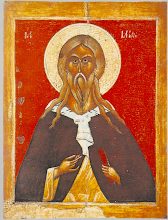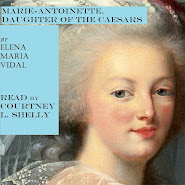Bishop Athanasius Schneider's address, given in extenso below, identifies three liturgical practices, which, although widespread and, until recently, accepted unquestioningly, cry out for correction and reform in the Ordinary Form (or Novus Ordo) of the Mass.
One can cite . . . the loss of the sacred and sublime character of the liturgy and the introduction of more anthropocentric gestural elements. This phenomenon makes itself evident in three liturgical practices well known and widespread in nearly all the parishes of the Catholic world:(1) the nearly total disappearance of the use of the Latin language;(2) the reception of the Eucharistic Body of Christ directly on the hand and standing;(3) the celebration of the Eucharistic Sacrifice in the modality of a closed circle in which priest and people continually look each other in the face. This manner of praying, that is: not all facing in the same direction, which is a more natural bodily and symbolic expression with respect to the truth of everyone being spiritually turned toward God in public worship, contradicts the practice that Jesus Himself and His Apostles observed in public prayer at the temple or in the synagogue. Moreover, it contradicts the unanimous testimony of the Fathers and all the prior tradition of the Eastern and Western Church.These three pastoral and liturgical practices, in noisy rupture with the laws of prayer maintained by generations of faithful Catholics for nearly a millennium, find no support in the conciliar texts, but rather contradict either a specific text of the Council (on the Latin language, see Sacrosanctum Concilium, n. 36, § 1; 54), or the "mens", the true intention of the conciliar Fathers, as can be verified in the Acts of the Council.Where Do We Go From Here?
Bishop Schneider's observations should stimulate reflection, liturgical catechesis, and reform on the part of the pastors of souls. The object of these three steps would be:
1. The restoration of the use of the Latin language (and of Gregorian Chant) in some parts of the Mass, beginning with the Ordinary.
2. The restoration of the reception of Holy Communion on the tongue with communicants kneeling. This will, in time, necessarily lead to the restoration of the so-called "Communion Rail" and the use of the paten held under the chin of the communicant by an acolyte.
3. The restoration of the practice of priest and people together facing in the same direction for the Eucharistic Sacrifice, that is, from the Offertory until the Communion.
And Also . . .
To these three steps, I would add four related initiatives for the reform of the Ordinary Form of the Mass:
1. In every parish: the reservation of service in the sanctuary and at the altar to boys and men, so as to bear witness to the priestly potentialities inherent in all manhood, be it by means of ordination to Holy Orders, or by means of the role of the husband and father in the domestic church (ecclesiola) of the family.
2. In every parish: the development of a parallel field of service, under the patronage of the Blessed Virgin Mary, reserved to girls and women including the worthy adornment of the Domus Dei, the parish church, and the care of the appointments required for the Sacred Liturgy; and the visitation and relief of the elderly, of the sick, of widows, and of families in distress.
3. While waiting for the desired restoration of the subdiaconate in the Ordinary Form of the Roman Rite, the restriction of the use of Extraordinary Ministers of Holy Communion to those exceptional and rare instances specifically allowed by liturgical law, giving preference to men instituted as acolytes, and to senior (male) servers at the altar distinguished by piety and by knowledge of the sacred rites, always suitably vested in cassock and surplice, or amice, alb, and cincture.
4. Given that Holy Communion under both species is often advanced as an argument for the necessity of Extraordinary Ministers of Holy Communion, and given the relative frequency of accidents that occur during the distribution of the Most Precious Blood, Holy Communion ought to be given, as clearly recommended by the Holy See in Sacramentali Communione (1970), by intinction of the Sacred Host by the priest in the Chalice of the Precious Blood, or under the species of bread only.
William F. Buckley at 100
16 hours ago




















No comments:
Post a Comment